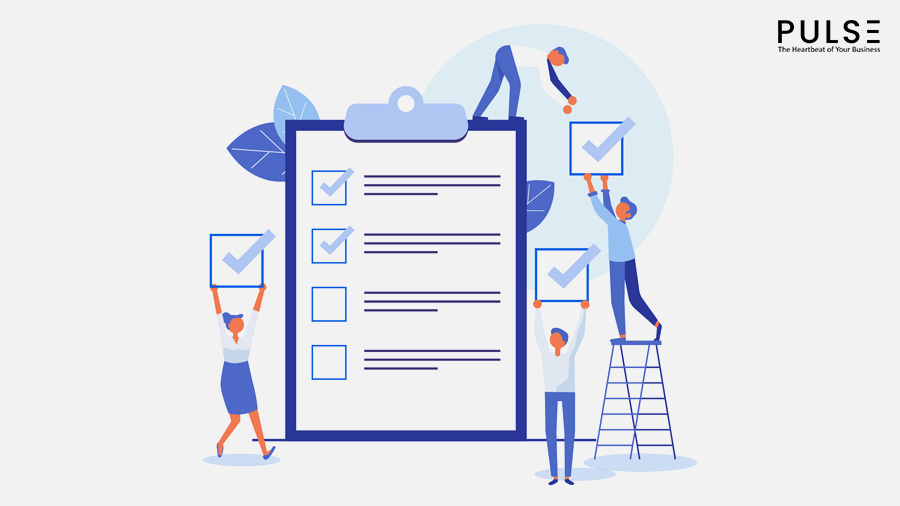How many times have all of us reached the car door or the elevator door only to realize that we have forgotten our wallet or in current times our face masks or to check if the geyser was switched off. A checklist on the door that you go through before stepping out can not only save precious time, especially in the mornings when we are all dashing to work, but it can also ensure safety and peace of mind.
The same applies to workplaces too. Often small aspects ignored at offices or factories could lead to major lapses resulting in losses, financial, and otherwise. Having a comprehensive checklist for various operations is important for safe and smooth functioning. Here is a look at creating a checklist that works.
Creating Checklists That Work
Checklists help in performing business operations with precision, improve productivity, efficiency, and effectiveness. Things are not left “to chance” with these checklists. Pulse is a field inspection application that lets you create customized checklists and ensures 100% compliance. Pulse is easy to use and facilitates self-audit, thereby ensuring that workspaces remain safe and function smoothly.
1. Identify the Most Common Mistakes
Often “silly mistakes” like the ones made while solving math problems cause mishaps or problems in business places. Identifying these mistakes is the first step to creating a useful checklist. In current times ensuring that all employees and customers follow the hygiene protocols can help in keeping the work environment safe.
2. Break Large Tasks Into Smaller Parts
Creating a checklist requires breaking the larger complex tasks into smaller, actionable steps. Different departments may require different checklists; if you are creating a checklist, you may not know each department’s detailed process. In such a scenario, it is important to observe the workflow and seek inputs from others who are directly involved in doing the job before designing a checklist for each department.
3. Balance is the Key
As we mentioned above, it is important to break the larger parts into smaller bits for an effective checklist, but it is important to maintain a balance too. A checklist should not have too many action points, yet at the same time, it should incorporate all the essential aspects. The checklist should not list just a long list of steps but must include the most crucial ones; it should be short and focused.
A checklist that is complex and has too many steps is likely to be ignored; make one which is followed for it to be useful.
4. Maintain a Record
Maintaining a record of your checklists helps in their usage, assessing their efficacy, and documenting your business processes. This documentation can be done in the old-fashioned way of using pen and paper as we often create a to-do list for the day. However, businesses need a more structured and accessible way to use these checklists and also to modify them from time to time. A digital solution like Pulse that can help you create, maintain, and update your checklist from time to time.
5. Assign People
The most comprehensive checklist will not work unless the right people are assigned to carry out the required tasks. Depending on the department and the task at hand, it needs to be delegated to the appropriate people. Staff must be designated to carry out the necessary checks and then take the required action; this helps in fixing accountability too.
6. Test Your Checklist
Do not expect to get a perfect checklist on the first go; till a checklist is not tested, you cannot be sure about its utility and efficacy. Test your checklist; once the checklist is tested, identify the gaps, and work on trying to fill them. Self auditing from time to time is important
7. Update Your Checklists
Checklists cannot be assumed to be something permanent; they need to be regularly updated and modified. They should be an ever-evolving list. Owing to the COVID-19 pandemic, the checklist made both by the most high-tech car manufacturer and the neighborhood bakery will have to be updated, keeping in mind the changing times. Self auditing from time to time is important not only for compliance but also to update the checklist that has been created.
Customers and staff feel more secure and confident when they see a business that evolves its practices with time. Even the most thorough and comprehensive checklists need revisiting and improvements. You should be open to modifications and suggestions.
Conclusion
Whether it is our daily chores or complex business operations, creating the right checklists can go a long way in ensuring smooth, secure, and efficient homes and workspaces. Pulse offers a simple solution that lets you create checklists that are flexible, driven by logic, and require minimal effort.
